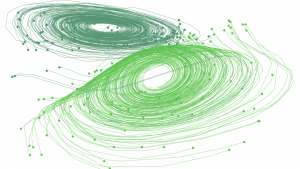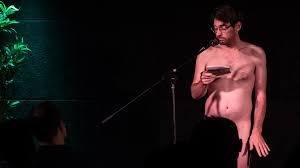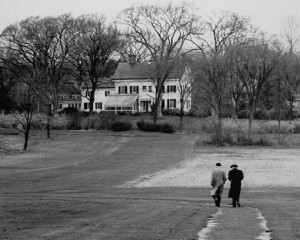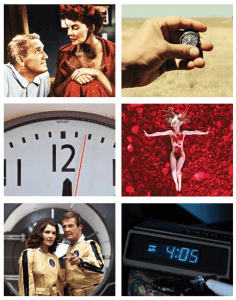Linda Marsa in Nautilus:
 He scanned my medical history, and the answer was there in black and white: a body mass index of 24, blood pressure a shade lower than the normal range, total cholesterol below 120, and no chronic disorders or ailments to speak of. There was just one outlier in this picture of good health: I recently turned 67. Which is why, when I saw a new doctor for my annual checkup, he had a hard time believing I wasn’t taking an arsenal of drugs simply to remain upright. There is plenty of alarm about the unprecedented aging of humanity. Since 1950, the median age in developed countries has jumped from 28 to 40, and is expected to reach 44 by mid-century. The percentage of citizens age 65 and older is expanding accordingly, from less than 10 percent in 1950 in the United States, Western Europe, and Japan to a respective 20, 30, and 40 percent by 2050. The fear is that, as baby boomers like me march lockstep into “retirement age” (the first of us crested that hill in 2011), there will be fewer young workers to support us old folk, which will curb spending, strain the healthcare system, and drain Social Security and Medicare benefits.
He scanned my medical history, and the answer was there in black and white: a body mass index of 24, blood pressure a shade lower than the normal range, total cholesterol below 120, and no chronic disorders or ailments to speak of. There was just one outlier in this picture of good health: I recently turned 67. Which is why, when I saw a new doctor for my annual checkup, he had a hard time believing I wasn’t taking an arsenal of drugs simply to remain upright. There is plenty of alarm about the unprecedented aging of humanity. Since 1950, the median age in developed countries has jumped from 28 to 40, and is expected to reach 44 by mid-century. The percentage of citizens age 65 and older is expanding accordingly, from less than 10 percent in 1950 in the United States, Western Europe, and Japan to a respective 20, 30, and 40 percent by 2050. The fear is that, as baby boomers like me march lockstep into “retirement age” (the first of us crested that hill in 2011), there will be fewer young workers to support us old folk, which will curb spending, strain the healthcare system, and drain Social Security and Medicare benefits.
Yet it’s hard to reconcile this chilling prediction with my own experience. Thanks to genetic luck and some sensible lifestyle habits—I walk two miles every day, quit smoking decades ago, and have never set foot inside a fast food joint—I’m in as good or better shape than ever. I hike and travel, and still have the energy to work 50- to 60-hour weeks. I have a supportive network of family and friends, and a thriving career doing what I love. No longer crippled by the toxic insecurities of my youth, I’m the happiest and most fulfilled I’ve been in my life. As far as I’m concerned, I’m not even close to being put out to pasture. Am I nuts? Although my doctor may regard me as some rare, exotic bird, the statistics tell a different tale. Every day, 10,000 Americans turn 65, and every day, more and more of them are just as fit as me. Society may still view able, competent, sound-of-mind seniors as happy curiosities. But the fact is we are quickly becoming a sizeable demographic.
More here.

 Can we, after all these months, find it within ourselves to manage a teeny-tiny, eensie-weensie, little itty-bitty smidgen of sympathy for Donald Trump? It doesn’t have to be much. Something about the size of the period at the end of this sentence would do. I mean, all the man did was run for president and accidentally win, and now it’s all over Twitter and everywhere else that he could end up in jail! C’mon folks, just look at the guy. It all started out so innocently back in the summer of 2015. He started out the only way he knew how: by running a reality TV show of a campaign. Remember that so-called “rally” in the lobby of Trump Tower when he announced? I mean, he and Melania coming down that escalator like a political Gloria Swanson descending the staircase of her mansion in “Sunset Boulevard.” He may as well have turned to the camera and said, “I’m ready for my close-up.” Even the crowd was mostly extras hired from an open casting call.
Can we, after all these months, find it within ourselves to manage a teeny-tiny, eensie-weensie, little itty-bitty smidgen of sympathy for Donald Trump? It doesn’t have to be much. Something about the size of the period at the end of this sentence would do. I mean, all the man did was run for president and accidentally win, and now it’s all over Twitter and everywhere else that he could end up in jail! C’mon folks, just look at the guy. It all started out so innocently back in the summer of 2015. He started out the only way he knew how: by running a reality TV show of a campaign. Remember that so-called “rally” in the lobby of Trump Tower when he announced? I mean, he and Melania coming down that escalator like a political Gloria Swanson descending the staircase of her mansion in “Sunset Boulevard.” He may as well have turned to the camera and said, “I’m ready for my close-up.” Even the crowd was mostly extras hired from an open casting call. I. GARY SNYDER SAID that we know our minds are wild because of the difficulty of making ourselves think what we think we ought to think.
I. GARY SNYDER SAID that we know our minds are wild because of the difficulty of making ourselves think what we think we ought to think. ‘I am glad,’ wrote the acclaimed American philosopher Susan Wolf, ‘that neither I nor those about whom I care most’ are ‘moral saints’. This declaration is one of the opening remarks of a landmark essay in which Wolf imagines what it would be like to be morally perfect. If you engage with Wolf’s thought experiment, and the conclusions she draws from it, then you will find that it offers liberation from the trap of moral perfection.
‘I am glad,’ wrote the acclaimed American philosopher Susan Wolf, ‘that neither I nor those about whom I care most’ are ‘moral saints’. This declaration is one of the opening remarks of a landmark essay in which Wolf imagines what it would be like to be morally perfect. If you engage with Wolf’s thought experiment, and the conclusions she draws from it, then you will find that it offers liberation from the trap of moral perfection. David Duvenaud was collaborating on a project involving medical data when he ran up against a major shortcoming in AI.
David Duvenaud was collaborating on a project involving medical data when he ran up against a major shortcoming in AI. When the Soviet Union collapsed in 1991, pundits offered a variety of reasons for its failure: economic, political, military. Few thought to add a fourth, more elusive cause: the regime’s total loss of credibility.
When the Soviet Union collapsed in 1991, pundits offered a variety of reasons for its failure: economic, political, military. Few thought to add a fourth, more elusive cause: the regime’s total loss of credibility. Gorey has here and there been described as ‘Dr Seuss for Tim Burton fans’ and ‘the Charles Schulz of the macabre’, but he was in every way more wayward and interesting than that. He wrote almost impossible to classify little books — crunched-down Victorian novels — that seemed to belong in the children’s sections of bookshops but were quite unsuited to children, in whom he took little or no interest. He found a public only very slowly, and over many years — thanks, in large part, to till-point placement and Hello-Kitty-scale merchandising efforts by the Gotham Book Mart in New York.
Gorey has here and there been described as ‘Dr Seuss for Tim Burton fans’ and ‘the Charles Schulz of the macabre’, but he was in every way more wayward and interesting than that. He wrote almost impossible to classify little books — crunched-down Victorian novels — that seemed to belong in the children’s sections of bookshops but were quite unsuited to children, in whom he took little or no interest. He found a public only very slowly, and over many years — thanks, in large part, to till-point placement and Hello-Kitty-scale merchandising efforts by the Gotham Book Mart in New York. E
E
 Minutes before stepping out into the spotlight on a stage – totally naked – I am wondering whether to wear socks. “It’s cold,” shivers another performer. A friend counsels, “If you’re going out naked, do it in full.” The matter of the sock is a distraction from the fact that we’re about to show our willies to the masses. This might not be Wembley Arena, but the trendy basement bar in east London I’m performing in is packed with people – mainly men. Anticipation crackles among them. They giggle about picking seats with a good view of the stage. There are twice as many eyeballs as people. And each one of them is about to see all I have.
Minutes before stepping out into the spotlight on a stage – totally naked – I am wondering whether to wear socks. “It’s cold,” shivers another performer. A friend counsels, “If you’re going out naked, do it in full.” The matter of the sock is a distraction from the fact that we’re about to show our willies to the masses. This might not be Wembley Arena, but the trendy basement bar in east London I’m performing in is packed with people – mainly men. Anticipation crackles among them. They giggle about picking seats with a good view of the stage. There are twice as many eyeballs as people. And each one of them is about to see all I have. Brain conditions such as schizophrenia and autism spectrum disorder have long been known to have an inherited component, but pinpointing
Brain conditions such as schizophrenia and autism spectrum disorder have long been known to have an inherited component, but pinpointing 

 As the bus nears downtown Katowice, the site of the 24th annual UN Climate Conference, or COP24, two huge funnels loom into view: a coal mine. There are fourteen in Katowice, although only two remain active. The rest lie strewn across the city like dormant volcanoes. The UN insists that Katowice is in transition—“from black to green,” says a welcome video at the opening ceremony—and claims that 40 percent of the city’s surface area is devoted to green spaces. Judging by the looks on their faces as they ogle the coal mine, the delegates on this bus do not see it that way. When they disembark, one of them scrunches up his nose at the unmistakable smell—rich and smoky—that wafts from an alleyway. Many Katowicians still burn coal for heat.
As the bus nears downtown Katowice, the site of the 24th annual UN Climate Conference, or COP24, two huge funnels loom into view: a coal mine. There are fourteen in Katowice, although only two remain active. The rest lie strewn across the city like dormant volcanoes. The UN insists that Katowice is in transition—“from black to green,” says a welcome video at the opening ceremony—and claims that 40 percent of the city’s surface area is devoted to green spaces. Judging by the looks on their faces as they ogle the coal mine, the delegates on this bus do not see it that way. When they disembark, one of them scrunches up his nose at the unmistakable smell—rich and smoky—that wafts from an alleyway. Many Katowicians still burn coal for heat. We made each other’s acquaintance among things and by way of them. Once again, I don’t remember anything about the subject of conversation: what I do remember is the perfect harmony the bread and wine afforded us. For instance, I could immediately see that you, Stravinsky, like me, love bread when it’s good and wine when it’s good, bread and wine together, each for the other, each through the other. This is where your personality and, by the same token, your art—in other words, all of you—begin; I took the outermost path to this inner knowledge, the most terrestrial road. There was no “artistic” or “aesthetic” discussion, if memory serves; but I can still see you smiling at your full glass, the bread you were brought, the carafe. I can see you picking up your knife and the quick, decisive gesture with which you separated the rind from the lovely semi-firm cheese. I came to know you amid and through the kind of pleasure I saw you derive from things, the so-called “humblest” ones; a certain brand and quality of delectation that gets the whole being interested. I love the body, as you know, because I can scarcely separate it from the soul; mostly I love the great unity of their total participation in such a maneuver, where the abstract and concrete find themselves reconciled, where they explain and elucidate one another. For many young ladies, a musician is a big forehead with “ideas” inside (God only knows which ones!): you showed me right away that the musician who invents a sound might be the furthest thing from a specialist, and that he distills it from a living substance, a substance common to all of us but with which one must first make direct and human contact.
We made each other’s acquaintance among things and by way of them. Once again, I don’t remember anything about the subject of conversation: what I do remember is the perfect harmony the bread and wine afforded us. For instance, I could immediately see that you, Stravinsky, like me, love bread when it’s good and wine when it’s good, bread and wine together, each for the other, each through the other. This is where your personality and, by the same token, your art—in other words, all of you—begin; I took the outermost path to this inner knowledge, the most terrestrial road. There was no “artistic” or “aesthetic” discussion, if memory serves; but I can still see you smiling at your full glass, the bread you were brought, the carafe. I can see you picking up your knife and the quick, decisive gesture with which you separated the rind from the lovely semi-firm cheese. I came to know you amid and through the kind of pleasure I saw you derive from things, the so-called “humblest” ones; a certain brand and quality of delectation that gets the whole being interested. I love the body, as you know, because I can scarcely separate it from the soul; mostly I love the great unity of their total participation in such a maneuver, where the abstract and concrete find themselves reconciled, where they explain and elucidate one another. For many young ladies, a musician is a big forehead with “ideas” inside (God only knows which ones!): you showed me right away that the musician who invents a sound might be the furthest thing from a specialist, and that he distills it from a living substance, a substance common to all of us but with which one must first make direct and human contact. Between 2007 and 2010, the artist Christian Marclay and a team of researchers scoured tens of thousands of films for scenes and shots in which time was in some way incorporated. It could be a close-up of a watch or a sand timer, the $10m four-faced opal clock at New York Grand Central Station or a novelty timepiece showing two pigs humping merrily (from Mighty Aphrodite). Better yet, it might be an instance in which time plays a pivotal role: the clock tower struck by lightning in Back to the Future, or Harold Lloyd clinging to the minute hand high above Los Angeles in Safety Last!
Between 2007 and 2010, the artist Christian Marclay and a team of researchers scoured tens of thousands of films for scenes and shots in which time was in some way incorporated. It could be a close-up of a watch or a sand timer, the $10m four-faced opal clock at New York Grand Central Station or a novelty timepiece showing two pigs humping merrily (from Mighty Aphrodite). Better yet, it might be an instance in which time plays a pivotal role: the clock tower struck by lightning in Back to the Future, or Harold Lloyd clinging to the minute hand high above Los Angeles in Safety Last!